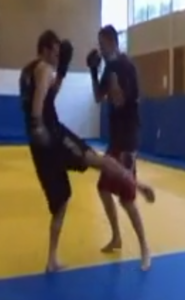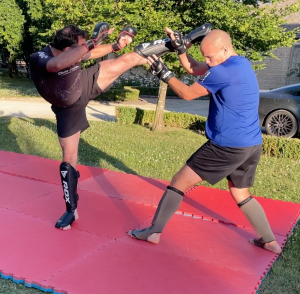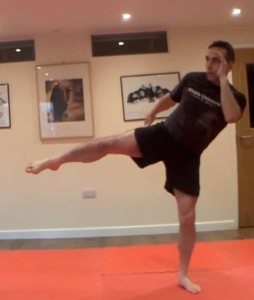Nuances of Hooks & Round Kicks (diary entry)
- jamie03066
- Aug 23, 2022
- 2 min read




22.08.2022 Monday's second lesson was my client's third hour of her Muay Thai course. We revised all material previously covered, jabs, crosses, lead hooks, teeps, rear round kicks, punching defences and shin-checks plus I introduced the switch-kick. However, the bulk of the lesson was looking at the details of where to place the feet during the lead hook and the round kick. After a warm-up of dynamic stretching and muscle activation, we went through some simple technique placement. I focused on having my client maintain a "tall" upright posture as she threw lead teeps and placed jabs and crossed. We combined these before moving on the focus mitts. When on the focus mitts I worked on pivoting the rear foot for the lead hook without having my client lean forward. She worked to activate her obliques whilst maintaining a balanced stance. One key stylistic difference between boxing and muay Thai is the general weight distribution. Western boxing styles tend to prefer to shift a little more weight forward than backwards in their stance. Nak muays generally want their weight on the back foot so that they can use the front foot to fire off teeps and to check round kicks. The main combination focus was jab/cross/hook/rear round kick and jab/cross/switch-kick. When it comes to classic round kicks in muay Thai it is crucial to roll the hips over and this most efficiently achieved by having the supporting foot turn 90 degrees away from the opponent. The supporting foot should also have its heel raised off the ground to create maximum impact by reducing the surface area traction. There are variations on the way one should hold the hands during this kick. All agree that the arm on the kicking side should play an active roll that begins with stretching it towards the target. Both my original kru and the great Dutch kickboxer/mixed martial arts champion Bas Ruten prefer to keep that outstretched arm over the kicking side, dropping the weight in that direction. However, it is fairly standard in Muay Thai send this arm back away from the kick as it comes through helping to create a strong torque in the oblique muscles. Since leaving my original school in 2004 I began adopting this method and in recent years have added a protective hand from my opposite side. The switch-kick is a little more advanced than any of the techniques covered. I taught it from doing a simple step forward into a reverse stance and kick. We will add the explosive kicking action next week. Again, the stepping foot needs to come down with heel off the ground and the toes pointing 90 degrees away from the intended target. The lesson finished with 1 x 3 minutes technique pad-work in flow and then an intensive 3 minute round of technique/speed/power. https://clubbchimera.com/services/













Comments